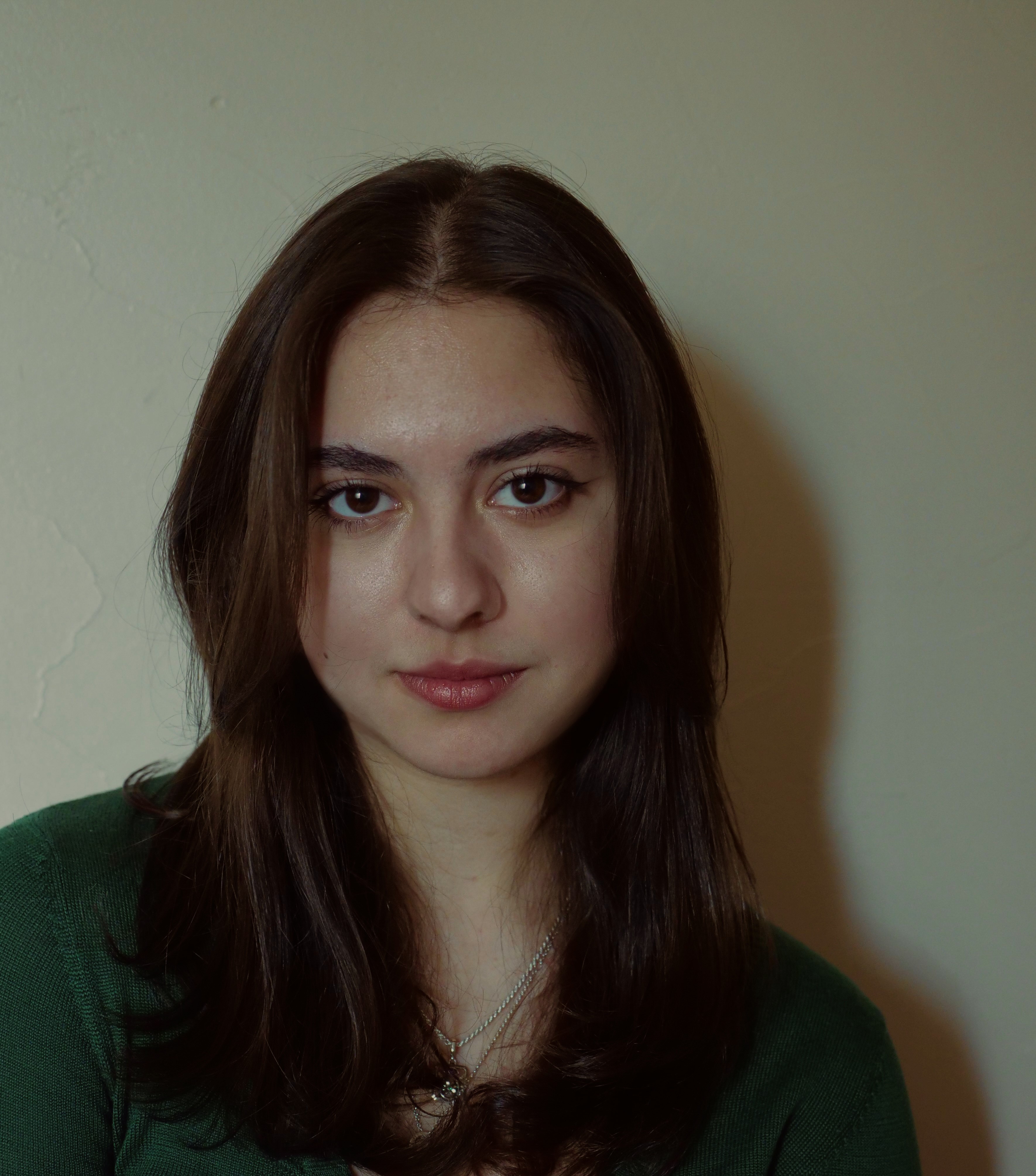 The dance of two stars is deadly. Though beautiful, when one star comes into orbit with another, their partnership doesn’t always end amicably. One star may take on a vampiric state, sucking the mass from the other. In some cases, the star absorbing the other’s gaseous contents cannot handle the drastic increase in mass and it goes supernova. It is from the exploded contents of this overwhelmed star, where new stars are born, perhaps simultaneously with one another. A star could even dance with a black hole, being shredded from merely stepping too close to its partner. There is a wide spectrum of what could happen in the dance of a heavenly body and its companion. Although some of these interactions come at the expense of one or both participants, they produce breathtaking visuals. Olivia Aghabi in “Asterion Waltz” was awestruck by these ideas and wanted to take current mathematical and spectroscopic data further in her paintings. This work was particularly inspired by Carles Badenes’ spectroscopy research on binary systems; It was created alongside Badenes and professor Omid Shekari’s guidance, both of whom Olivia would like to thank.
The dance of two stars is deadly. Though beautiful, when one star comes into orbit with another, their partnership doesn’t always end amicably. One star may take on a vampiric state, sucking the mass from the other. In some cases, the star absorbing the other’s gaseous contents cannot handle the drastic increase in mass and it goes supernova. It is from the exploded contents of this overwhelmed star, where new stars are born, perhaps simultaneously with one another. A star could even dance with a black hole, being shredded from merely stepping too close to its partner. There is a wide spectrum of what could happen in the dance of a heavenly body and its companion. Although some of these interactions come at the expense of one or both participants, they produce breathtaking visuals. Olivia Aghabi in “Asterion Waltz” was awestruck by these ideas and wanted to take current mathematical and spectroscopic data further in her paintings. This work was particularly inspired by Carles Badenes’ spectroscopy research on binary systems; It was created alongside Badenes and professor Omid Shekari’s guidance, both of whom Olivia would like to thank.Olivia Aghabi is a visual artist and researcher. She advocates strongly for more interdisciplinary collaborations, especially between scientific literature and artistic renditions—one which spans beyond diagrams. She believes there is beauty within all research which deserves to be surfaced and celebrated. She uses her art to express not only the pure ephemeral, but also the theoretical. Olivia is currently pursuing a bachelor of science degree in biochemistry, and is completing minors in studio arts, chemistry, and exercise science. After her undergraduate studies, Olivia will work toward a PhD in biochemistry and biosynthesis. In her future work, she will continue to visually communicate the beauty she finds in her metabolic research.
Faculty Researcher: Carles Badenes
Artistic Advisor: Omid Shekari
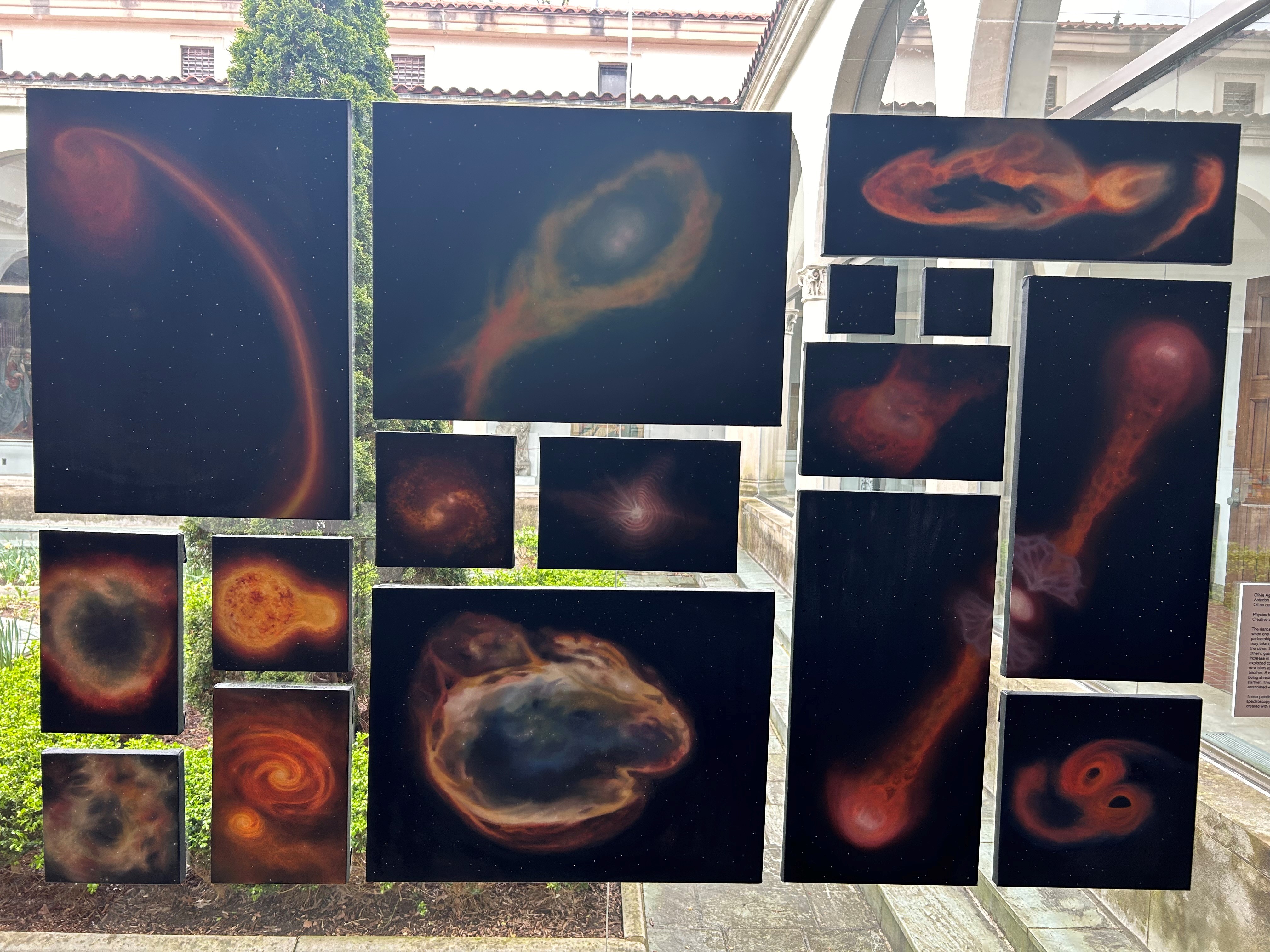
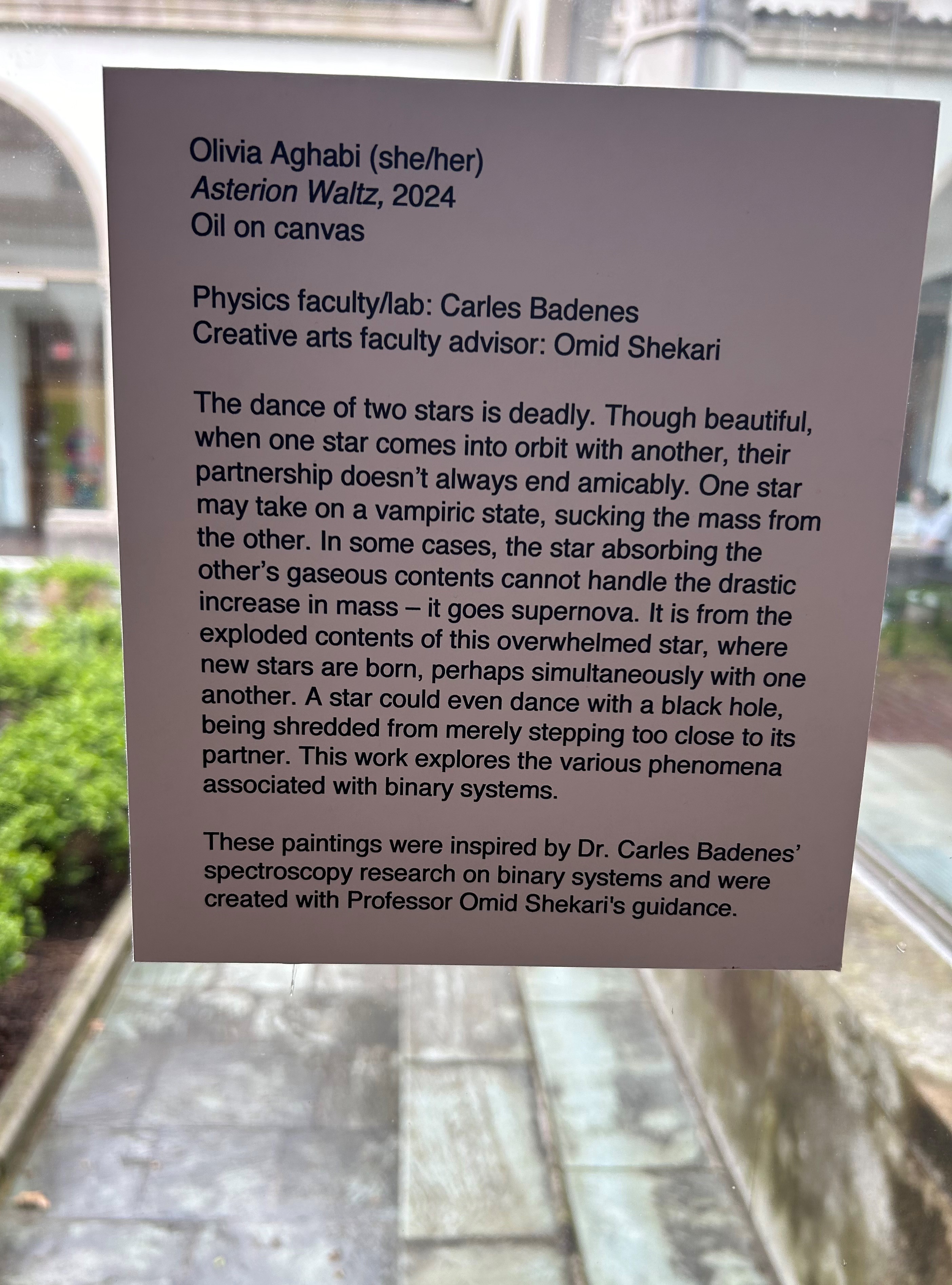
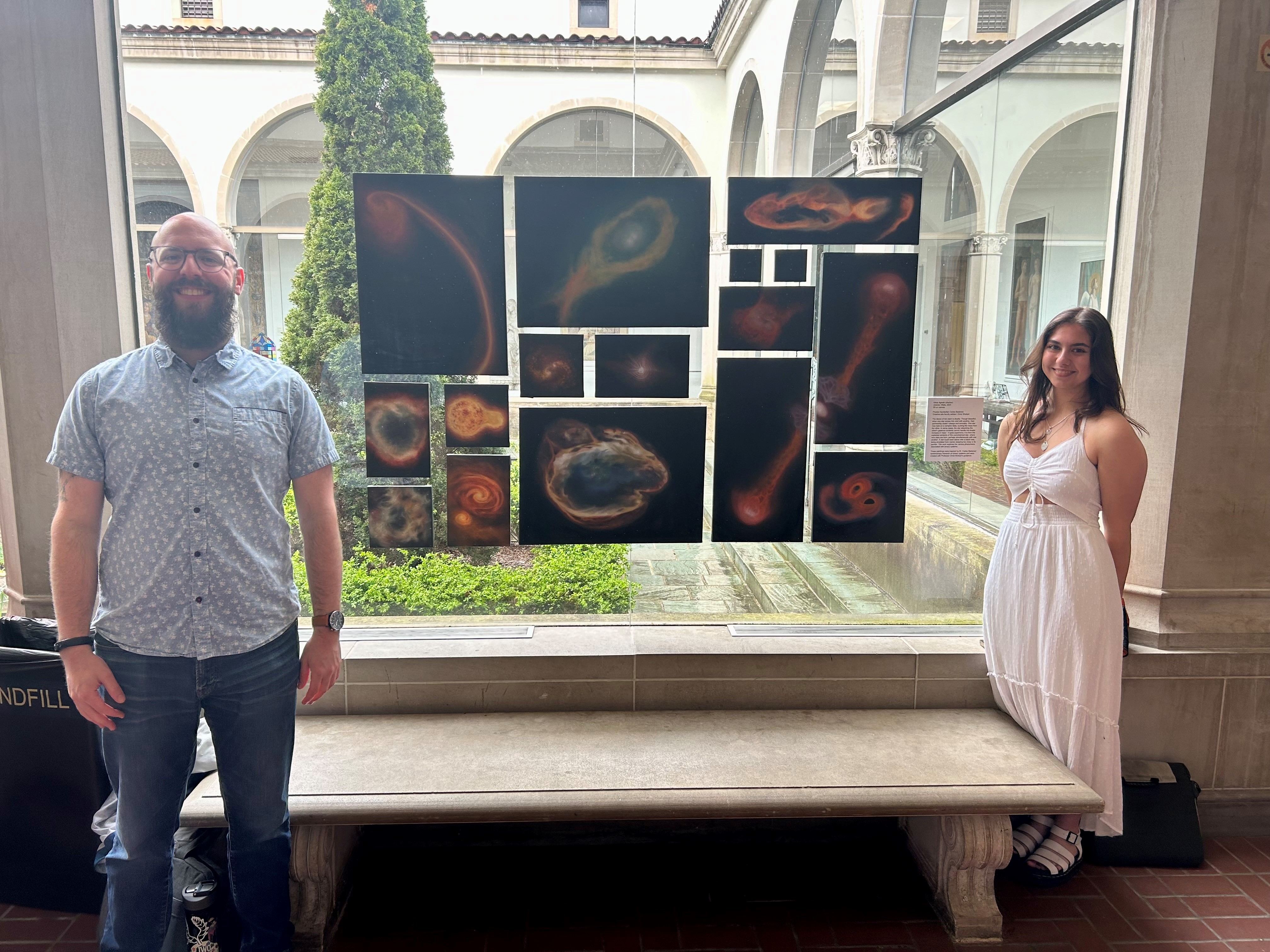
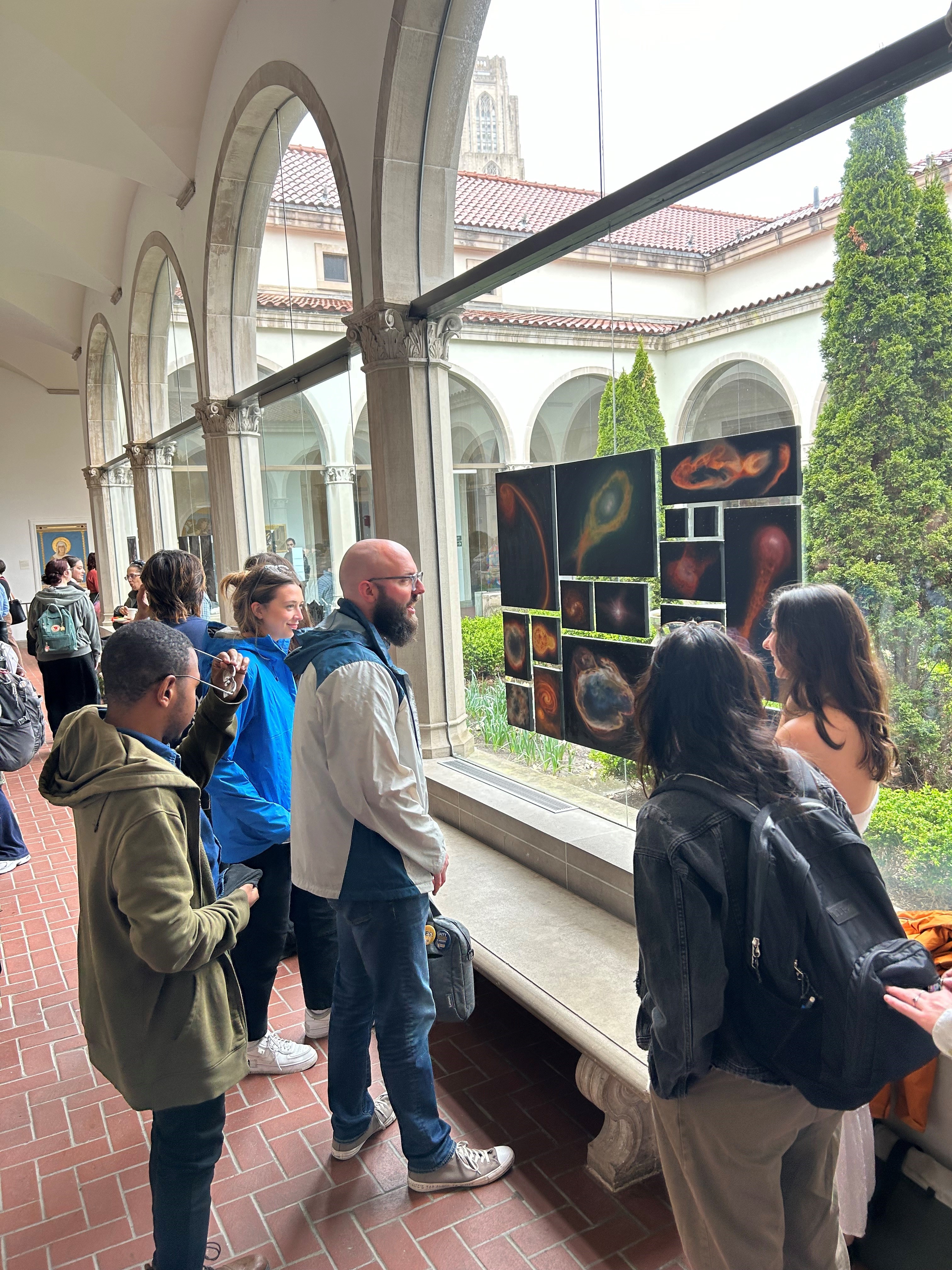
Performance Recording